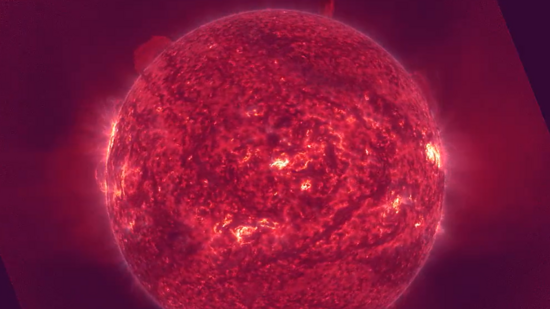Massive Solar Eruption: The ‘Bird-Wing’ Event

- 27 May 2025
In News:
In May 2025, astronomers observed a dramatic solar eruption, dubbed the “Bird-Wing” event, due to its unique wing-like plasma structure. Originating from the Sun’s northern hemisphere, the eruption stretched over 1 million kilometers—more than twice the Earth-Moon distance.
Key Components of the Event
- Solar Flare:
- A sudden, intense burst of electromagnetic radiation caused by magnetic field realignment on the Sun.
- Classified from A to X (increasing order of X-ray brightness).
- Travels at light speed, reaching Earth in about 8 minutes.
- Can disrupt radio communication and GPS systems by affecting the ionosphere.
- Coronal Mass Ejection (CME):
- A massive release of charged solar plasma and magnetic fields into space.
- Travels at 250–3000 km/s, reaching Earth in 18 hours to 3 days.
- Can cause geomagnetic storms, impacting power grids, satellites, navigation, and inducing auroras.
The “Bird-Wing” event involved both phenomena, but Earth narrowly avoided a direct hit, experiencing only a glancing blow. The impact was minimal and did not cause significant technological disruptions.
Associated Geomagnetic Effects
- A filament eruption, distinct from solar flares, was responsible for the minor geomagnetic activity observed. These are cooler plasma structures held by magnetic fields and appear as dark strands on solar imagery. When destabilized, they erupt and emit charged particles.
- Northern Lights (Aurora Borealis) were expected to be visible over parts of the UK, particularly Scotland, as the trailing edge of the CME brushed past Earth.
Space Weather Risks from Solar Storms
According to the European Space Agency (ESA) and NASA:
- Solar flares can disrupt radio signals and satellite communication.
- Solar particles, including high-energy protons, may arrive hours later, posing risks to astronauts and electronics.
- Geomagnetic storms can:
- Disturb Earth's magnetic field.
- Affect power lines, pipelines, and satellites.
- Expand the upper atmosphere, increasing drag on low-orbit satellites, potentially altering their trajectory.
- Temporarily reduce the number of cosmic rays reaching Earth by deflecting them.
